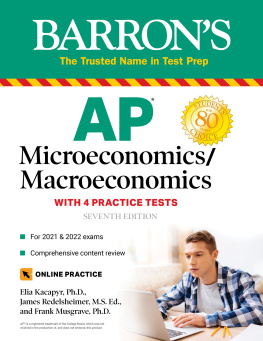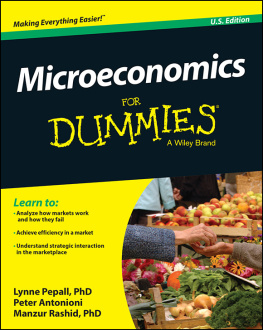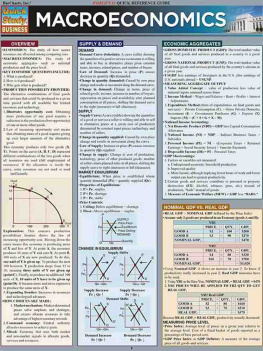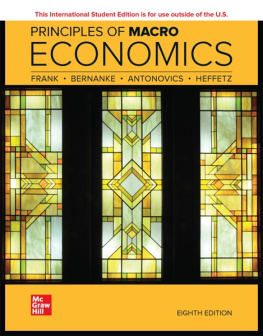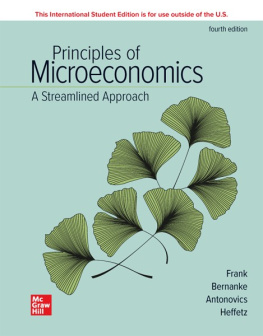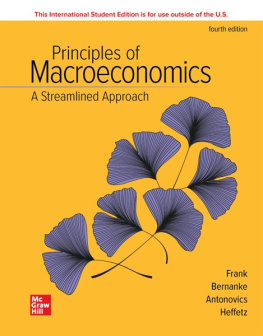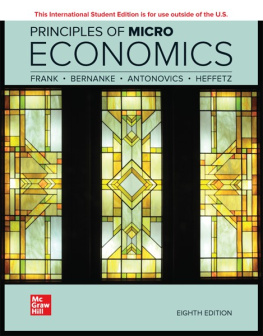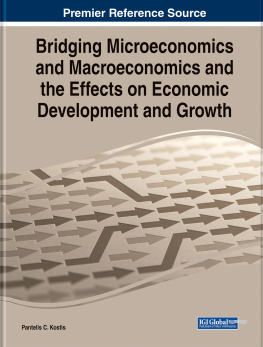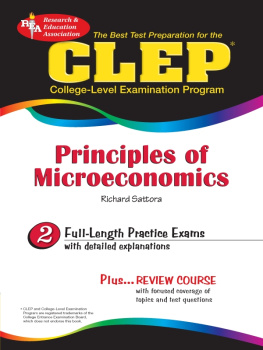Contents
Guide
Page List

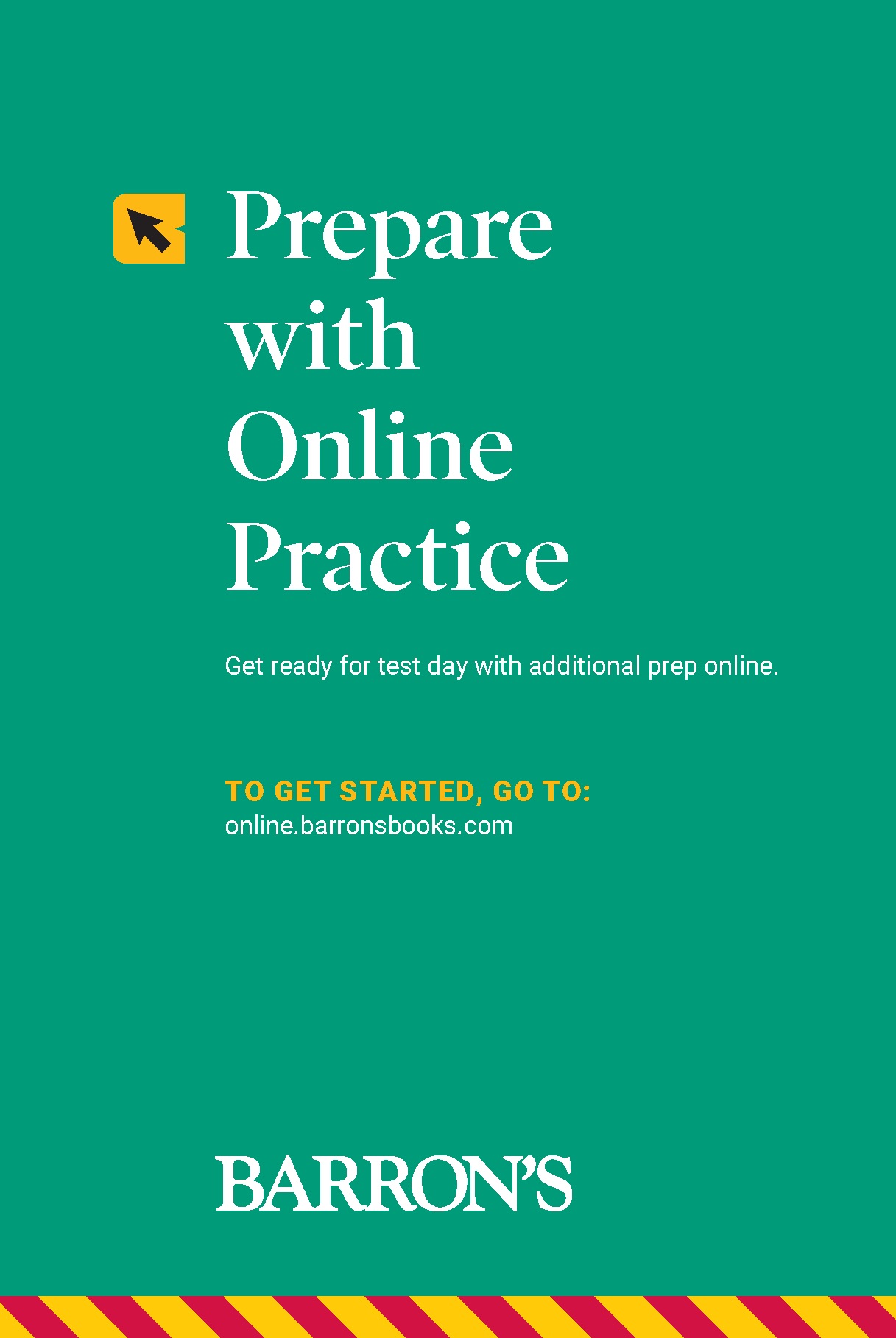
ABOUT THE AUTHORS
James Redelsheimer is an AP Economics teacher at Robbinsdale Armstrong High School in Plymouth, Minnesota. James is a Master Teacher with the Minnesota Council on Economics Education (MCEE) and is a Next Gen Personal Finance Teacher Fellow. In 2011, James was awarded the 3M Economics Educator Excellence Award from the MCEE and in 2016 received the Thrivent Financial Leadership Award, also from the MCEE. He has been a guest lecturer in the economics department at Batumi State University in the Republic of Georgia and has taught a Summer Macroeconomics class at the University of Minnesota Twin Cities. James has received travel grants and fellowships to visit and learn about the economies of Japan, China, Korea, Germany, Turkey, and Costa Rica.
Elia Kacapyr is a professor of economics at Ithaca College. He holds a B.A. in economics from the University of Maryland. His Ph.D. is from the Andrew Young School of Policy Studies at Georgia State University. Elias fields are macroeconomic theory and econometrics. He has published numerous scholarly articles and three books, including A Guide to Basic Econometric Techniques.
ACKNOWLEDGMENT
We would like to thank Jennifer Giammusso, our editor, for her wonderful guidance, patience, skill, and many hours of outstanding work in bringing this revised edition to publication.
We would like to thank Megan Buckman and the rest of the Barron's team for their outstanding work in bringing this edition to publication.
DEDICATION
To my future Economics students, Carly, Grant, and Abby Redelsheimer.
James Redelsheimer
Copyright 2021, 2018, 2015, 2012, 2009 by Kaplan, Inc., d/b/a Barrons Educational Series Previous editions copyright 2006, 2001 by Kaplan, Inc., d/b/a Barrons Educational Series under the title How to Prepare for the Advanced Placement Exam in Micro/Macroeconomics by Kaplan, Inc.
All rights reserved under International and Pan-American Copyright Conventions. By payment of the required fees, you have been granted the non-exclusive, non-transferable right to access and read the text of this eBook on screen. No part of this text may be reproduced, transmitted, downloaded, decompiled, reverse engineered, or stored in or introduced into any information storage and retrieval system, in any form or by any means, whether electronic or mechanical, now known or hereinafter invented, without the express written permission of the publisher.
Published by Kaplan, Inc., d/b/a Barrons Educational Series
750 Third Avenue
New York, NY 10017
www.barronseduc.com
ISBN: 978-1-5062-7218-4
10 9 8 7 6 5 4 3 2 1
Kaplan, Inc., d/b/a Barrons Educational Series print books are available at special quantity discounts to use for sales promotions, employee premiums, or educational purposes. For more information or to purchase books, please call the Simon & Schuster special sales department at 866-506-1949.
Contents


WHERE TO FIND MICRO AND MACRO
ANSWERING STRATEGIES
Economics is a fascinating and enlightening subject that provides students with valuable insights to help understand the world and analyze complex issues while also helping one make better decisions and make the most of life. That being said, your most immediate concern is not likely solving global issues but preparing for the Advanced Placement (AP) Economics exam. Whether you are feeling extremely confident or in serious need of help preparing for the AP Economics exam, you have already made a wise economic decision by using this very book right now to prepare for the AP Economics exam. Like the tens of thousands of students around the world preparing for AP Economics exams this year (over 200,000 AP Economics exams are taken around the world every year), you may be feeling a bit overwhelmed by the extensive content in Economics, or thinking, Where do I even begin to start studying? Rest assured that in using this book you have turned to a fantastic resource to study for the AP exam. This book will help you learn the essential content in a clear and concise format. It highlights the important material to know based on a careful analysis of past AP Economics exams, and provides tips for success on either the AP Macroeconomics exam, AP Microeconomics exam, or both. It is clearly organized and written to help you focus on what you will actually be tested on and will prepare you for success for the AP Economics exam. In this book you will find countless ways to practice for the AP exam and your class, including a pretest, a full-practice exam, practice multiple-choice and free-response questions at the end of every chapter, and a key graphs to know section. Every question in the book comes with a detailed explanation.
To make sure you are efficient with your review, lets make sure you are in the correct section of the book. Some students take both the AP Microeconomics and AP Macroeconomics tests, but others may just take one of these. Please see .
Table 1.1What Chapters Should You Study?
Micro | Macro |
, with a pretest, a full practice exam, key graphs summary, and practice questions at the end of each chapter | , with a pretest, a full practice exam, key graphs summary, and practice questions at the end of each chapter |
The College Board is very specific about what information will appear on the exams. For instance, an entire 5570 percent of the AP Microeconomics exam is made up of the nature and function of product markets! Spending time studying product markets is obviously a smart decision.. You will find the entire AP Microeconomics and Macroeconomics course outline on the College Boards website.
Table 1.2Micro and Macro Exam Topics and Approximate Percentages (Multiple-Choice)
Micro | Macro |
1. Basic Economics Concepts (1215%) 2. Supply and Demand (2025%) 3. Production, Cost, and the Perfect Competition Model (2225%) 4. Imperfect Competition (1522%) 5. Factor Markets (1013%) 6. Market Failure and the Role of Government (813%) | 1. Basic Economic Concepts (510%) 2. Economic Indicators and the Business Cycle (1217%) 3. National Income and Price Determination (1727%) 4. Financial Sector (1823%) 5. Long-Run Consequences of Stabilization Policies (2030%) 6. Open EconomyInternational Trade and Finance (1013%) |
On both AP Economics exams, two-thirds of your test grade comes from the multiple-choice section; the other third comes from the free-response questions (FRQs), with one long and two short questions (). More details and strategies for the multiple-choice and free-response questions are given later in this chapter.

